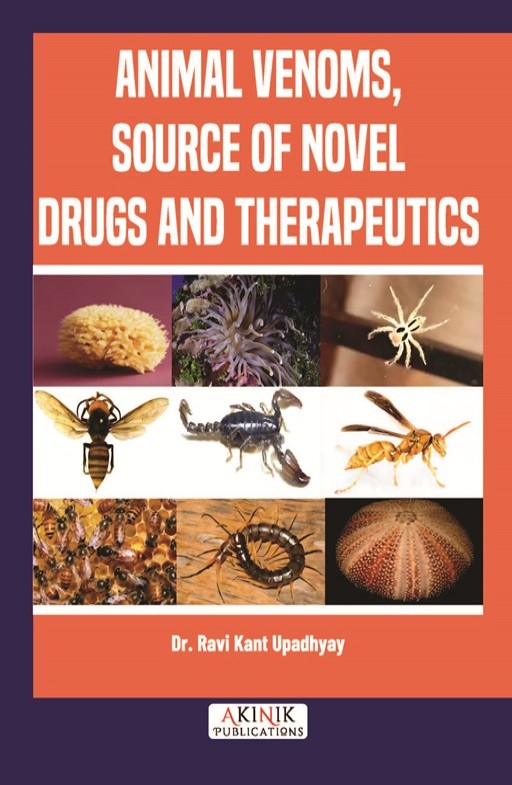
| Editor(s) | : | Ravi Kant Upadhyay |
| Paperback ISBN | : | 978-93-7150-927-5 |
| Ebook ISBN | : | 978-93-7150-446-1 |
| Publisher | : | AkiNik Publications |
| Language | : | English |
| Pages | : | 407 |
| Publication Year | : | 2025 |
| Publication Date | : | 25/07/2025 |
| Binding | : | Paperback |
| DOI | : | https://doi.org/10.22271/ed.book.3365 |



Animal venoms are complex natural secretions composed of proteins, peptides, enzymes, and bioactive molecules that play critical roles in self-defense and predation. These toxins, secreted by diverse organisms such as bees, wasps, hornets, ants, scorpions, spiders, ticks, and cnidarians, exhibit remarkable structural and functional diversity. Venom peptides interact with ion channels, receptors, and cell membranes, disrupting normal physiological functions and often leading to paralysis, cytolysis, or immune hypersensitivity. Despite their toxic nature, animal venoms are increasingly recognized as valuable sources of therapeutic agents with applications in antimicrobial, anticancer, antiviral, analgesic, and anti-inflammatory treatments. Compounds like melittin, mastoparan, chlorotoxin, and phospholipase A2 demonstrate potent effects against bacteria, viruses, and tumor cells, making them strong candidates for novel drug discovery. Many venom-derived peptides also act as channel blockers, modulating neural and immune responses with high specificity. Their ability to resist microbial resistance and induce apoptosis in cancer cells highlights their immense pharmacological promise. In addition, venom peptides are being studied for potential roles in diabetes regulation, cardiovascular protection, and neurological disease management. Advances in bioinformatics, molecular modeling, and biotechnology have further enhanced their therapeutic potential by enabling structural modifications that improve selectivity and reduce toxicity. With their multifunctional properties and evolutionary refinement, animal venoms stand as an extraordinary natural reservoir for innovative drug development and modern biomedical research.
Some chapters were a bit dry, but the overall content was rich and informative.